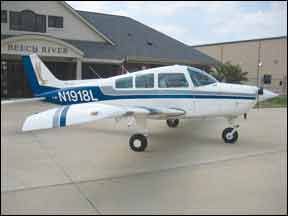The concept of “training” and Beechcraft go together like ketchup and ice cream, which is to say you know about both, but Beech airplanes don’t spring to mind when you think of cheap-to-fly entry-level airplanes. Nonetheless, during the heady days of GA in the 1970s, Beech did dip its toe in the trainer market. The model 19 and 23 series Beechcraft, the Musketeer, Sport and Sundowner, were Beechs answer to Pipers Cherokee line and if not the 150/152, then the 172 from Cessna. Beech didnt exactly set the world on fire with sales, but the two models did acceptably well. Theyre neither the fastest nor sleekest looking of the GA lot, Brent Earwood but theyre better built than the competition and there’s no question that these airplanes-really, all of the Beech line-are the best handling light GA aircraft. But handling isn’t everything, of course, and the Sundown and Musketeer do have some quirks. Weight and balance issues may be one and so is speed, or lack thereof. But so what? Beech owners just look at the dowdy cruise speeds as an opportunity to spend a little more time flying. These aircraft represent a shopping paradox for those in the market for a used aircraft. You can buy one for a song-a discount song at that-but when you try to sell it, will it even be worth the opening intro notes? Were not sure this matters much, as long as buyers going into the deal know the score.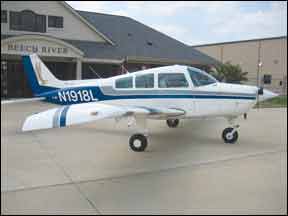
The Sport and Sundowner first appeared in the early 1960s, specifically the Model 23. It had a 160-HP Lycoming O-320, and could carry four people in comfort, as long as they werent in a hurry to get anywhere. The original Model 19 debuted in 1966. With 150 horses, its really a two-seater with a backseat for more stuff. Except for the engines, the two aircraft are essentially identical.
Beech also came out with the same aircraft sporting retractable gear and a 200-HP engine and carrying the Model 24 Sierra designation, an airplane thats the subject of its own UAG report.
The Musketeer evolved over the years. The original 1963 Model 23 had a 160-HP Lycoming, following the lead established by the Piper Cherokee two years before but Beech soon re-engined the airframe with Continental IO-346-A, an oddball engine that was essentially an IO-520 with two cylinders hacked off. Many owners have since swapped out this orphan engine with a type much easier to service.
By 1968, Beech switched horses again, this time back to Lycoming, with a 180-HP O-360-A-series, the motor that carried the line through the rest of its production life. Meanwhile, Beech wheeled out the 150-HP Sport as a trainer in 1966. By 1970, the two models had become the B19 Sport and the C-23 Sun-downer. (If youre confused, youre not alone.)
Mediocre PerformerThe 19/23 series was never a hot performer. Indeed, by 1973, the FAA determined that, when flying at its certificated maximum gross weight of 2250 pounds, the B19 couldnt meet the certification climb performance minimums. In response, AD 73-25-04 was issued, limiting the B19s gross weight to 2000 pounds, a heavy performance hit. A Beech kit raised max gross back up to 2150 pounds, but the airplane was no load hauler. After 1973, Sports that rolled out of the factory came with the mods already installed.
The Sport continued in production until 1979, when Beech introduced a clean-sheet design as a replacement-the two-place Skipper, another Beech idea that didnt quite pan out. The Sundowner chugged along for a few more years before being sucked under by the great GA depression and sales downturn of the 1980s.
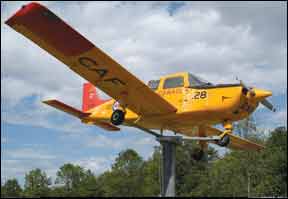
By 1983, the line was history. Still, some 2400 Sundowners were built and many still fly. The Sport isn’t quite so numerous, with only 900 built, some of which occasionally turn up on the training flight line here and there.
Owners fairly gush about how comfortable these airplanes are but tend to frown painfully when describing performance. Cruise speeds in the 100-knot range are about the best you can expect from the 160-HP models. The Sundowner with the big Lycoming will do 117 knots with a light airframe and fresh wax job.
In its original incarnation, the Sport got socked with an AD due to poor climb performance at gross weight. But even after the AD-mandated improvements, it was hardly any better. Owners have reported gross-weight climbs in the 300- to 400-FPM range on hot days. Then again, this may vary by aircraft condition. One owner said climb rates of about 500 FPM through 9500 feet were possible. Loaded to gross, Beech claimed only a 792-FPM climb for the Sundowner at sea level. So don’t expect much.
The Sundowner is not a STOL ship in the landing department, either. Although the book says you can stop on less than 1000 feet of pavement at sea level with no wind, we say good luck. Allowing for real world piloting skills, add at least 25 percent to that figure. And if you do manage to shoehorn your way into a 1000-foot strip, you’ll probably need a set of wrenches and a truck to get the airplane out.
Listed takeoff performance for the airplane is 1130 feet of pavement just to lift off. you’ll need nearly 2000 feet of level ground between brake release and the first 50-foot obstacle if you expect to clear it. If density altitude creeps up, you can find yourself needing jet-length runways. At a 2000-foot high field on a calm, 88-degree day, figure on 1700 feet to get off the ground and almost 3000 feet to clear the obstacle. These airplanes are clearly not suitable for high-elevation airports or even sea-level ‘dromes with short runways.
Payload, Range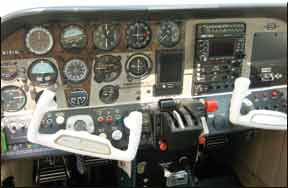
OK, so these aircraft don’t burn up the course speed-wise. But don’t look to them for aerial pick-up truck duty, either. Net payload for both the Sport and Sundowner are quite close to other aircraft in their class, which is to say not much.
Range is certainly not outstanding, although quite acceptable for most owners. In all but the early model Sports, standard fuel load is 57 gallons useable. Thats enough gas to carry the Sport about 620 miles, while the Sundowner will cover only 530 miles on the same load.
That fuel load may sound impressive, especially when you look at the fuel capacities of the competition. The Piper Cherokee, American General (Gulfstream/ Grumman) Tiger and Cessna Cardinal all carry seven gallons less gas.
Yet, all those airplanes can fly just as far because their higher cruise speeds let them cover the same amount of ground on less fuel. Of course, your mileage may vary, especially if youve got any illusions about carrying people and baggage.
Fill the cabin and you cant fill the tanks, its that simple. The Sundowners can be expected to haul about 900 pounds of useful load in their average equipped condition. If you need full tanks, that means you can only carry three people and 50 pounds of baggage.
If youre in a Sport, toss out the third person and the baggage, and you still get to sweat those high-weight climb rates. So, the Sport/Sundowners are cheap to buy, but the payback is lack of performance; there’s still no free lunch.
Like most Beech products the Sport and Sundowner are routinely described as being delightful to fly. In the air, the controls are light and we’ll harmonized, smooth and responsive. Theyre stable enough to make good IFR trainers, even if their low cruise speeds turn them into one-airplane traffic jams. There are even aerobatic models. But that doesnt mean handling and flying is wart free. The Sundowner, and especially the Sport, can be downright vicious on landing.
These airplanes have developed a reputation for providing some ego-crushing landings for even experienced pilots. Student pilots who were unfortunate enough to endure training in the Sport all too often wound up with more than their egos crushed.
The reason for all this sturm and prang is the airplanes bad habit of porpoising and crow-hopping on landing, a trait it shares with Mooneys but not with other trainer types in this class.
Some experienced Sport pilots can regale hangar-flying crowds with tales of epic wrestling matches as they worked throttle and yoke desperately trying to stop the porpoise before A) the nose gear collapsed; B) the aircraft groundlooped; C) the runway ended; or D) all of the above.
At least part of the reason for this touchdown behavior is the landing gear design. Beech chose a trailing-beam configuration for the aircraft. Normally, this type of landing gear is quite forgiving of botched landings.
But Beech went for stiff rubber shock mounts instead of oleos, converting what would have been wonderful cushioning into terrible springs, ready to help the aircraft rebound into the air at the drop of a wheel. With its stiff rubber donuts, the Mooney gear has the same shortcoming with the same results for hapless pilots.
Gentle, mains-first touchdowns are the rule to prevent a crow-hopping excursion across the field. All this is not to imply that good landings are impossible in the Musketeers. Precise speed control is the key. If youre the type who likes to tack on a few knots for the insurance company and another couple for the wife and kids, buy a Cherokee or some similar, more forgiving design.
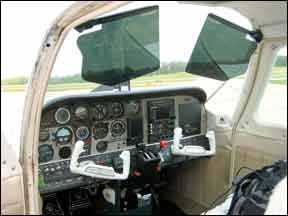
The Sport and Sundowner demand precision handling down final and into the flare. If your landing technique is off, these aircraft will show you exactly where youre going wrong by magnifying the results out of all proportion to anything youve seen before. Great training, if it doesnt scare you to death.
Speed control is also important in the opposite direction for Sport pilots. Coming over the fence a few knots too slow can result in running out of stabilator in the flare. That, in turn, translates into a nose-first touchdown and at least some crow-hopping down the runway.
Pilots report the Sport is a bit nose-heavy, especially with flaps down, and many have found that carrying some power into the flare provides more controllability into the touchdown. Some owners tell us they carry ballast in the baggage compartment to offset this.
Another strategy for coping with the aircrafts landing habits is to install the Beech spin kit. One Beech dealership we spoke with some years back reported that the spin kit, which adds strakes to the nose and stabilator along with a ventral fin to the rear fuselage, seemed to tame the aircrafts landing characteristics.
With all this as background, it should come as no surprise that the Sport and Sundowner have their greatest safety troubles in the landing arena. Thats true of other types, too, but its doubly true of this model.
At least the aircraft are consistent in this regard. Consider that an NTSB study reaching back to the early 1970s identified the Sundowner as the worst aircraft in its class for hard landings. Were talking about a rate of hard landings that was five times worse than the Cessna Skyhawk or the Piper Cherokee.
Indeed, every time weve looked at the safety records of the Sport and Sundowner, the story has been the same-lots of hard landings and lots of overshot landings. And even today we find the pattern intact. One interesting finding of our studies through the years has been the low rate of groundloop accidents.
Both the Sport and Sundowner have nice, wide-stance main landing gear, so once the aircraft are firmly on the ground, they handle and track quite well. Its getting them to that point thats the challenge. We don’t mean to overstate the case by any means, but forewarned is forearmed.
Musketeer ground handling is so good, in fact, that its possible to get the aircraft to pivot around inside its own wingspan, making maneuvering on the ramp or around the gas pumps a breeze.
MaintenanceIf there’s one thing that really seems to keep Musketeer owners happy, its that the airplanes are cheap to keep. Maintenance troubles through the years have been mercifully few and far between. Thankfully, Beech seems able to maintain a sense of proportion as to whats important and whats mere window dressing when it comes to issuing “mandatory” service bulletins.
Other maintenance items to be concerned with are fairly obvious. The landing gear, for example, should come in for detailed scrutiny at any pre-purchase inspection, as we’ll as during annual inspections.
Given the previously discussed landing troubles, its a better-than-even bet that some sort of trouble will be found on pre-purchase. By the same token, make sure the firewall gets a good once-over, since bending and warpage of the firewall is one common consequence of excessive crow-hopping and nose-first arrivals.
Another item to scrutinize closely on annual inspections is the fuel caps. The NTSB called for pressure checks of older caps, but simple visual inspection should be able to detect caps that have become too stiff and crusty to provide a good seal to the wing filler port.
Nevertheless, cap replacement and/or overhaul every 10 years is not a bad idea as a prophylactic measure. And, of course, pay attention when checking the sumps on preflight. Engine troubles on these aircraft should be few and far between.
One notable exception is valve sticking, which on the O-320 and O-360 should be considered facts of life. Lycoming Service Bulletin 388B calls for checks of valve guide wear every 400 hours, but wed cut that interval in half if youre experiencing normal 100- to 150-hour-per-year utilization.
Cut it in half again if youre flying less than 100 hours per year. The inspection is simple, once youve got the proper jigs, and it could save you thousands in later cylinder work. In the just-plain-annoying category, there are complaints about leaking windshields and windows. This sort of thing is not really a problem particular to the Musketeers, since most of the smaller GA singles seem to suffer from window leaks to one extent or another.
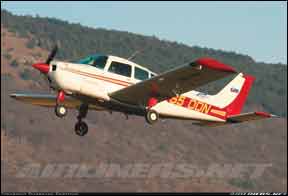
The cure-the real cure, that is-is to remove the suspect window, clean the tracks and re-install it with new sealant. The route most often taken, though, is to simply slather more RTV around the rim and hope for the best.
On pre-purchase inspection, pay special attention to the sidewall insulation and carpet padding for clues to potential pre-existing leaks. As with Mooneys, which suffer the same problem, this can lead to serious corrosion.
Watch the IO-346Make no mistake about the IO-346-found in the 1964 through 1967 Sundowners-its an oddball. It was used only in the Musketeer and is found nowhere else. Only 513 examples were built. Despite its origins as a sliced-up IO-520, its a rare mechanic indeed whos familiar with this engine.
If you insist on buying one of these models, be prepared to finance your mechanics learning curve. At the same time, be prepared for the prospect of owning a very interesting lawn ornament.
Pistons are no longer available for the IO-346, according to Mattituck. Your only hope come overhaul time is that your current pistons are serviceable and that your cylinders can be chromed back down to size. Otherwise, youre in for a long, hard search to find serviceable pistons.
Compounding the situation is the fact that the engines listed TBO is only 1500 hours. How about just swapping the Continental oddball out for something a bit easier to deal with?
don’t hold your breath. We could find no STCs available to allow such an enginectomy. So the best bottom-line advice we can offer is just avoid the models with this engine; there should be plenty of others to pick from.
Owner CommentsI purchased N1918L three years ago after deciding after 34 years on the ground to finally return to flying. I received the majority of my initial training in a Sundowner back in 1974 and wanted to continue my relationship with this great airframe when I took off once again.
The Sundowner has several major attributes that make it ideal for a guy my size. Im 6 foot 5 inches and weigh 275 pounds. It offers me two doors, so there’s no crawling across to the pilots seat, and it has the most leg, shoulder and headroom of any aircraft Ive flown.
While not the fastest bird in the sky, I can count on getting to my destination without being sore and stiff from being crammed into a tight cockpit. The design and build of the Sundowner is much like every other Beechcraft. Everything is sturdy and we’ll engineered. My airplane is as tight and aerodynamically stable as it was on its first flight. Ive been told that some parts on the C-23 are not interchangeable airframe to airframe, because each plane was hand finished before leaving the assembly line to insure all parts fit together as snugly as possible.
Overbuilt and extremely sturdy trailing link landing gear make any landing easy on the airframe, and the Madras wingtips on my airplane help to lower the stall speed and result in much slower, smoother touchdowns. This is especially important as the Sundowner glides like a large rock. Weighing in at a maximum of 2450 pounds, its definitely not the most agile machine on the ramp-more like an SUV. But that weight and stability really pay off in the sky. I can trim out my airplane and sit back and relax unless the trip gets bumpy, with minimal input required to insure a stable flight.
Ive invested in enough upgrades to make the airplane a very attractive IFR-capable traveler. I use an EDM-730 to monitor my extremely dependable Lycoming 180-HP O-360-A4K engine, along with other parameters such as fuel flow and capacity, remaining estimated duration of flight, battery charge, shock cooling, OAT, EGT, CHT and RPM. The 730 is linked to my Garmin GNS430W, allowing fuel flow and duration information to be automatically entered into my flight planning functions.
Comfort features such as a four-place intercom, Rosen visors, leather seating with
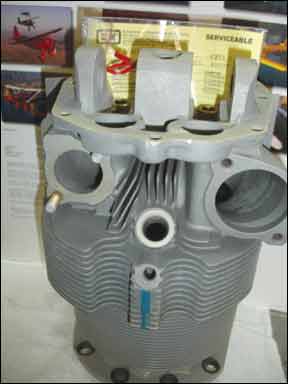
sheepskin covers for the front seats and a portable Arctic Air air conditioner make any trip more comfortable.
I have recently added a set of Gar Industry front-seat shoulder harnesses to the front seats. These are highly recommended as they are easily removable, we’ll made and no FAA approval is required to utilize them in your aircraft. The added level of safety they provide is we’ll worth the $299 purchase price.
Since my first annual, Ive relied on the expertise of Hammerhead Aeronautical in Laurens, S.C. (www.hammerheadaero.com) to keep my airplane in top shape. The late Mike Rellihan, along with current owner Chad Moser and his crew, specialize in “baby Beeches.” Their continuous oversight of our aging aircraft assure owners that no detail will be missed, and there will be no head scratching to try and come up with the correct answer for any concern regarding our airplanes.
The premier organization for baby Beech owners is the Beech Aero Club (www.beechaeroclub.org). Members of the club have access to a wealth of feedback and knowledge regarding the smaller Beechcraft airframes. With worldwide membership, BAC is a must for any Sundowner owner.
Im sure Im missing a lot of worthwhile details regarding the Sundowner, but maybe this will give you a start.
Brent Earwood,
Jackson, Tennessee
We purchased a 1982 Beech Sun-downer four years ago as the nucleus of a flying club we own. I had operated Warriors in a commercial operation previously and looked first for them, then 172s. But there were none in any condition to do what we planned. As a last resort, I looked at the Beech line and found the C23 we now own with only 2500 hours on the airframe, 100 on the engine and a decent set of radios to start with.
Since then, weve operated it for approximately 1200 hours. Block-to-block, we average 7.5-8 GPH with a mix of training and cross-country flying. We flight plan 113 knots at 9 to 10 GPH for cross-countries. Handling is straightforward and easy; its roll and pitch response feels more like a Bonanza or a light version of a Baron than the typical fixed-gear four-seater. The ride in turbulence is solid without much side-to-side wiggle. Overall, it feels like a substantial airplane in the air, and that gives a lot of confidence to both pilots and passengers.
It has been quite popular with our pilots for its cabin comfort as well. You sit bolt upright in the cockpit, more like a Bonanza or Baron than other low-wing brands like Warriors. Entry doors on both sides are convenient and safe; just make sure theyre closed properly-there is no secondary latch.
I had serious reservations about using the type as a primary trainer because of the reported wheelbarrowing tendency and subsequent nosegear collapses. In fact, ours had a nosegear collapse not long after it was delivered new to its first owner. But weve had no problems with this at all; attention to proper airspeed and flare seems to do it. Instrument students have raved about the panel layout as everything is logically placed and easily viewed.
I wish the engine instruments and fuel gauges in the subpanel were lit, but theyre not in ours. It is stable enough in IFR flight for comfortable cross-country travel and training.
One operational gotcha: weight and balance. The loading envelope is remarkably narrow. With two aboard in the front seats, 50 pounds or more is needed in the baggage area to keep the CG in line. There is a small weight that can be added to the airframe we’ll aft that does the same thing, but at a few hundred dollars weve opted for bags of sand.

Maintenance has been mostly routine; we average $25/hour for inspections and repairs based on a 250 to 300 hours year. The only type-specific item was a rebuilding of the nosegear, including replacement of the oleos, which cost approximately $3000. The airframe is robust and the engine (180-HP O-360) is we’ll matched to it. Parts are mostly easy to come by; sometimes theyre breathtakingly expensive, like an entry step for $3700 (we repaired our cracked one instead), so knowing the parts houses and going with good-quality used parts when reasonable to do so saves a lot of money.
In summary, Im very happy with the airplane and am glad to have stumbled onto it.
Jack Shelton,
Blaine, Minnesota
I decided to purchase a 1975 Beech C-23 Sundowner after receiving my private pilot certificate in 1995. Since January 1996, it has been my first and only aircraft. Although I had not planned to keep the aircraft for more than a few years subsequent to my getting an instrument rating, I found myself continuing to enjoy this Beech for nice weekend cross-country trips.
One of the things my passengers and I especially enjoy about the Sundowner is the great visibility. During a check ride, one CFI who was unfamiliar with the type, commented that the visibility was about as good as a helicopter. While I don’t think it is quite that good, it is great!
Another strong point is the entry doors configuration. It is enjoyable not having to enter from the port wing and having to slide across the seats. The cabin is also big and roomy, giving the appearance that it is larger and could carry more than it actually can.
The instrument panel is also roomy, easily accommodating avionics upgrades, like my GNS430W and a GTX-330. I still have nearly a third of the panel available for future toys.
The Sundowner, like other Beech products, has a solid feel and the controls are smooth. I typically fly in the 5000- to 10,000-foot range, which gets me into cooler air-important during Alabama summers. At these altitudes, I can expect to cruise at 115 knots, with a fuel burn of about 8.5 GPH with the Lycoming O-360. This gives the aircraft a theoretical endurance of about six-plus hours, which far exceeds my endurance. Speeds on the Beech are a little slower than a similarly-powered C-172 or PA-28, but this slower speed is more than offset by the comfort of the larger cabin. On a typical 300-mile flight, I am in the air another 10 to 15 minutes more than I would be in a Cessna or Piper. I just consider it an opportunity to fly another 10 to 15 minutes.
Maintenance costs are modest. My annuals run about $1200 to $1400. Insurance costs me about $1200 annually. The most difficulty that I have had in ownership is getting genuine Beech parts. I believe that the good people at Raytheon think I am ordering parts for a King Air! Parts also tend to be more difficult to locate on the aftermarket for items such as interior trim, windows and plastic exterior trim pieces such as wingtips.
It is interesting to me that a lot of pilots are not familiar with this particular aircraft or its siblings, despite the fact that 4000 of this family of aircraft were built over the 20-year production cycle. Pilots are always approaching me about the airplane, and telling me how much they like it. The really nice paint job makes it even more appealing.
The flying characteristics of the Sundowner are excellent. There are two areas, however, that I would caution prospective buyers to be aware of-weight/balance and approach/landing speeds. The C-23 tends to be nose-heavy and needs be kept at balance or slightly aft. Many owners, like me, carry extra weight in the baggage area to counter this forward CG characteristic.
The other area of concern is landing. I carry a few extra knots of airspeed on approach and landing, to help maintain better control. The nosewheel needs to be kept off the runway until the mains are firmly on the ground. The Beechs short wheel base, along with the tendency to be nose-heavy if the weight and balance are not correct, can result in porpoising, with potentially bad consequences for both airplane and pilot/passengers.
For the past 15 years, I have enjoyed my Sundowner. It is a solid, reliable airplane that is a thrill to fly.
Bill Moran,
Birmingham, Alabama

